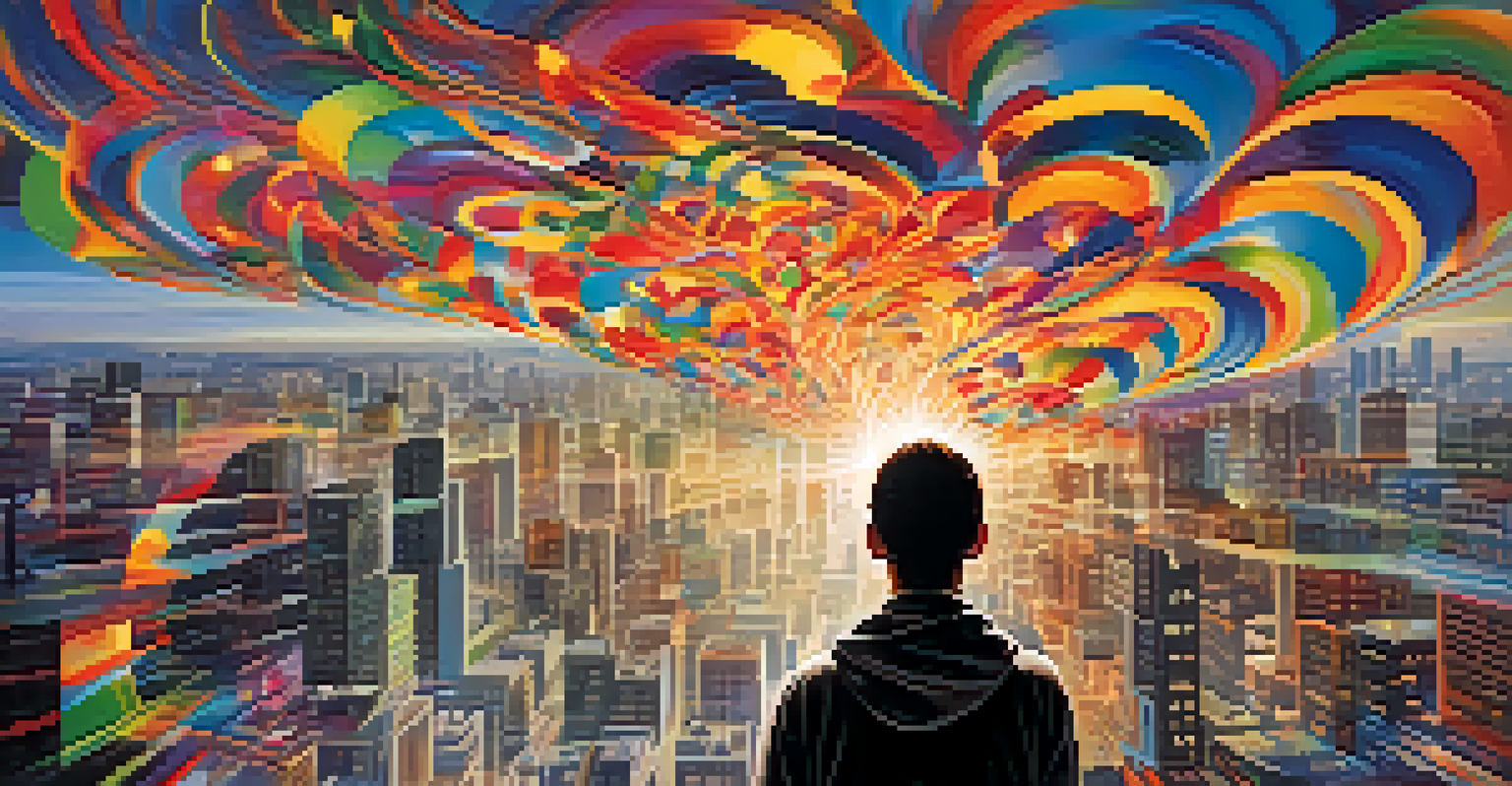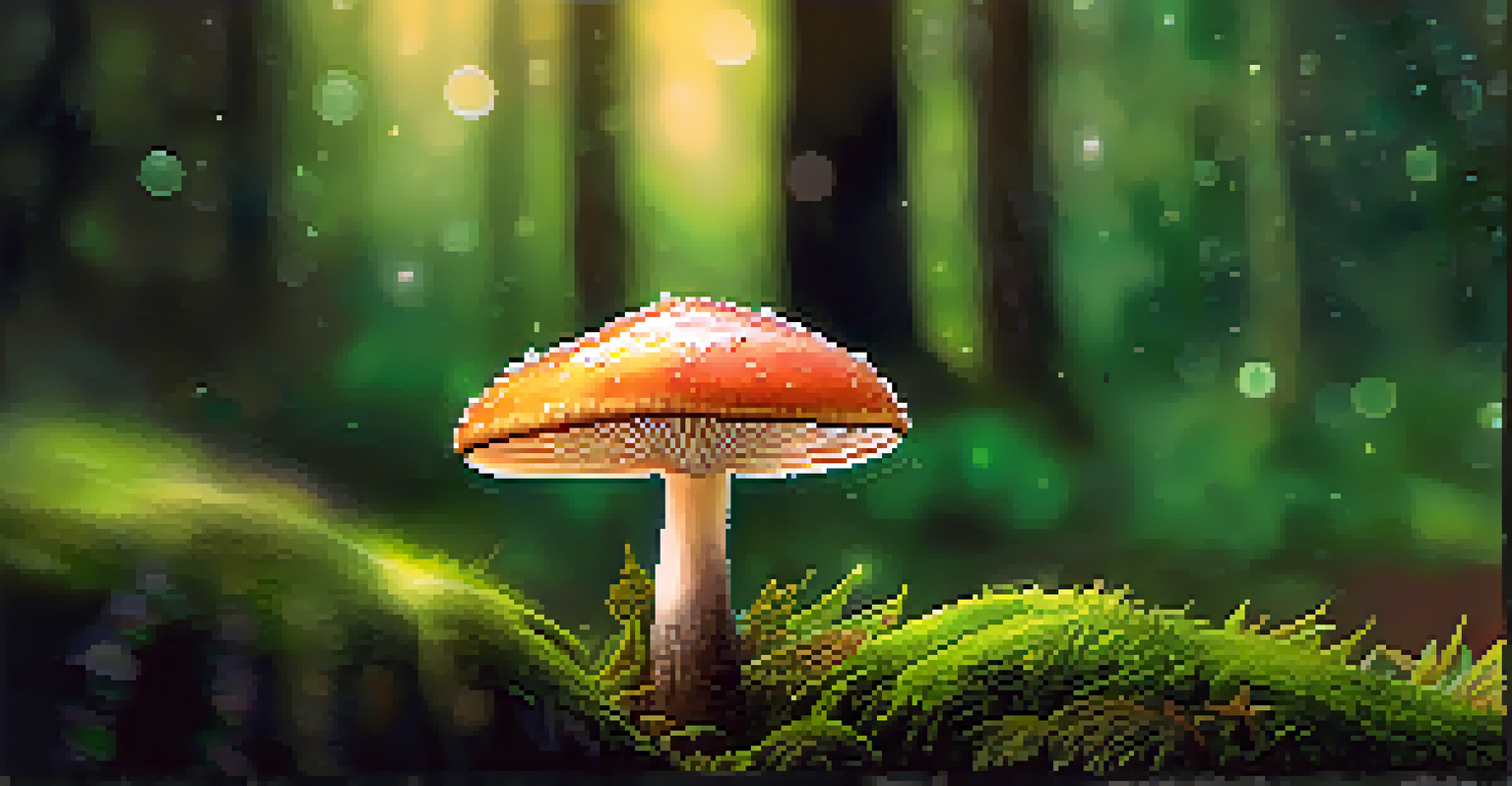Perception, Reality, and Hallucinogens: A Deep Dive

Understanding Perception: More Than Meets the Eye
Perception is how we interpret the world around us, shaped by our senses, experiences, and even our emotions. It’s like wearing a pair of glasses tinted by our past experiences, which can alter how we see things. For instance, two people can witness the same event but describe it differently based on their perspectives. This subjectivity raises intriguing questions about the nature of reality itself.
The eye sees only what the mind is prepared to comprehend.
Our brain processes sensory information and constructs a version of reality that may not always align with the objective world. This means that our perception can be flawed or biased, leading to misunderstandings or misinterpretations. Think of a magician performing a trick—what you perceive is often a clever manipulation of your senses. This illusion of reality is a fundamental aspect of human experience.
Understanding perception is crucial, especially when exploring the effects of hallucinogens. These substances can significantly alter our sensory experiences, challenging our grasp on what is real. As we delve deeper into this topic, we’ll uncover how hallucinogens interact with our brain and influence our perception.
Reality: The Foundation We Often Take for Granted
Reality is often viewed as the objective truth of our existence, the baseline against which we measure our perceptions. However, what we consider real is influenced by our cultural background, beliefs, and even current emotional states. For example, someone raised in a different culture may perceive social norms and behaviors in ways that seem foreign to another person. This highlights the fluidity of reality and how it can be subjective.

Philosophers have long debated the nature of reality, questioning whether it exists independently of our perceptions. Think of reality as a canvas that we each paint with our experiences and beliefs. This perspective encourages us to recognize that our understanding of reality is just one interpretation among many.
Perception Shapes Our Reality
Our interpretation of the world is influenced by our senses, experiences, and emotions, leading to diverse understandings of reality.
In the context of hallucinogens, our grasp of reality can be stretched and redefined. These substances can create experiences that challenge our concept of what is real, leading to both profound insights and potential confusion. Understanding this interplay between perception and reality becomes essential as we explore the effects of these substances.
Hallucinogens: Altering Perception and Reality
Hallucinogens, like LSD and psilocybin, are known for their ability to alter perception and induce vivid experiences. When consumed, these substances can lead to distortions in how we perceive time, space, and even our sense of self. Imagine standing in front of a painting that suddenly appears to breathe; this is the kind of experience many users report. Such alterations can prompt users to question the nature of their reality.
Reality is merely an illusion, albeit a very persistent one.
These substances act on brain receptors, particularly serotonin receptors, which play a vital role in mood and perception. This chemical interaction can lead to a heightened state of awareness or even spiritual experiences, blurring the lines between perception and reality. While some may find enlightenment in these altered states, others might experience confusion or anxiety.
It’s important to approach hallucinogens with caution. While they can provide unique insights into the nature of perception and reality, they also carry risks, especially for those with pre-existing mental health conditions. Understanding the potential effects of these substances is crucial as we navigate their complex relationship with our perception of the world.
The Science Behind Hallucinogens: How They Work
To grasp the impact of hallucinogens on perception and reality, we need to look at the science behind them. These substances primarily affect neurotransmitters in the brain, altering how information is processed. By mimicking serotonin, hallucinogens can create profound changes in mood and perception, leading to experiences that feel incredibly real yet are rooted in altered brain chemistry.
Research into hallucinogens has revealed that they can enhance connectivity between different brain regions, fostering a sense of unity and interconnectedness. This effect can lead to experiences where users feel at one with the universe or gain insights into their relationships and emotions. Such moments can be transformational but may also lead to a disorienting experience for some.
Hallucinogens Alter Perception
Substances like LSD and psilocybin can significantly distort our sensory experiences, challenging our grasp of what is real.
Understanding the science behind these substances helps demystify their effects. It opens the door to exploring not just their potential therapeutic uses, but also the broader implications for how we understand perception and reality. As we delve deeper, we see how the mind can be both a canvas and a labyrinth, shaped by our experiences.
The Intersection of Perception and Mental Health
The relationship between perception, reality, and mental health is a complex and often misunderstood topic. Many mental health conditions, such as anxiety and depression, can significantly alter one's perception of reality. For instance, a person with anxiety might perceive a neutral situation as threatening, leading to a distorted sense of reality that affects their daily life.
Hallucinogens have been studied for their potential therapeutic effects on mental health disorders. Some research suggests that these substances might help individuals confront and reframe their perceptions of trauma or distressing experiences. This can lead to a renewed sense of perspective and, in some cases, a path toward healing.
However, it’s crucial to note that hallucinogens are not a cure-all. The effects can vary widely from person to person, and for some, they may exacerbate existing mental health issues. Understanding this intersection is essential as we explore how our perceptions shape our reality and vice versa.
Cultural Perspectives on Hallucinogens and Reality
Throughout history, various cultures have utilized hallucinogens in spiritual and healing practices. Indigenous tribes in the Amazon, for example, have used ayahuasca for centuries to connect with the spiritual realm and gain insights into their lives. These practices highlight how perception can be expanded through guided experiences, often leading to profound revelations about reality.
Cultural attitudes toward hallucinogens can shape how individuals perceive their effects. In some societies, these substances are revered and seen as tools for enlightenment, while in others, they are stigmatized and viewed only as drugs. This dichotomy demonstrates how cultural context can influence our understanding of both perception and reality.
Culture Influences Perception
Cultural backgrounds impact how individuals perceive and interpret the effects of hallucinogens, highlighting the subjectivity of reality.
As we explore these cultural perspectives, we can learn valuable lessons about the potential benefits and risks associated with hallucinogens. Embracing a more nuanced view allows us to appreciate the ways in which these substances can alter perception and reality, fostering deeper connections to ourselves and the world around us.
Conclusion: Navigating the Complexities of Perception and Reality
In conclusion, the interplay between perception, reality, and hallucinogens is a fascinating and intricate topic. Understanding how our perceptions shape our reality—and how hallucinogens can alter this relationship—opens up new avenues for exploring our consciousness. It's essential to approach these substances with both curiosity and caution, recognizing their potential for insight as well as their risks.
As we continue to explore the nature of perception and reality, we must remain open to the myriad ways these elements interact. Each individual’s experience is unique, shaped by their history, culture, and personal beliefs. This diversity of perspectives enriches our understanding and encourages deeper conversations about the human experience.

Ultimately, delving into these complexities invites us to reflect on our own perceptions and how they shape our understanding of reality. Whether through scientific inquiry or personal exploration, the journey into the mind is one that continues to captivate and challenge us.